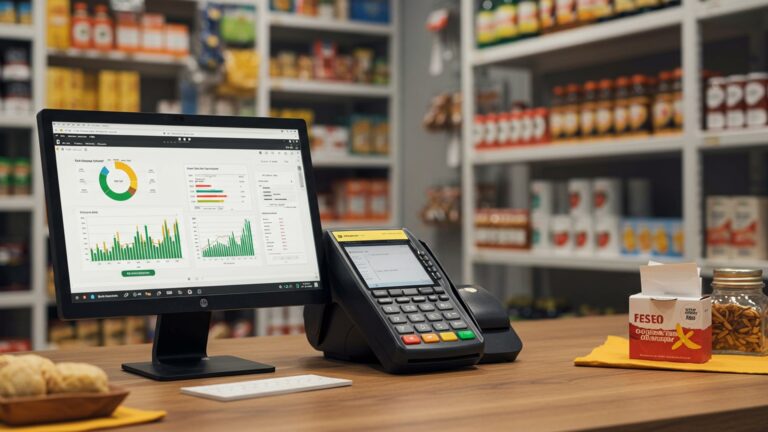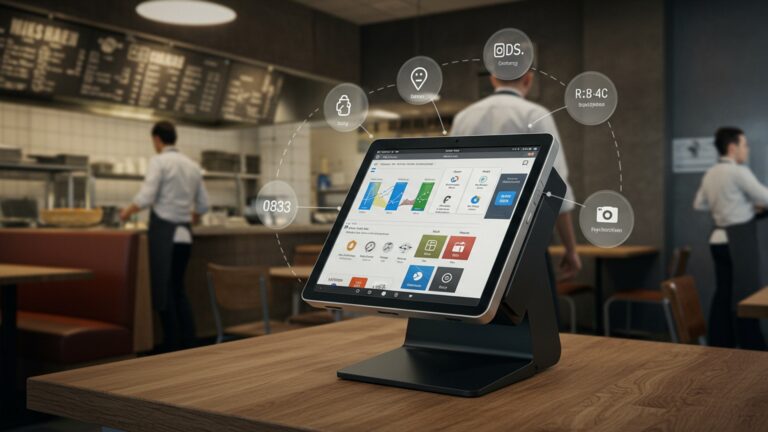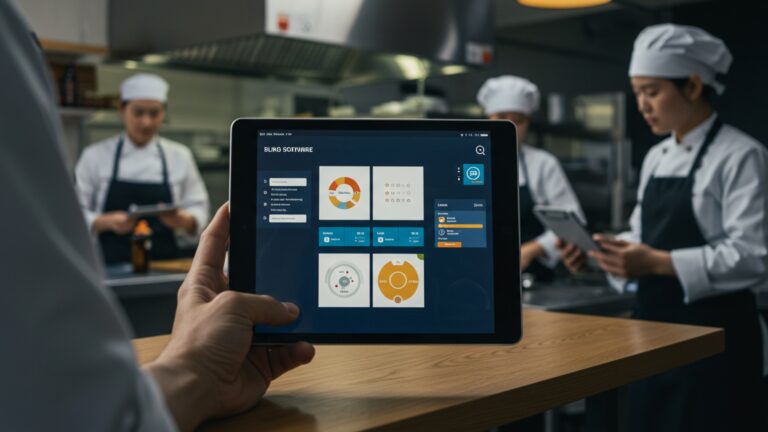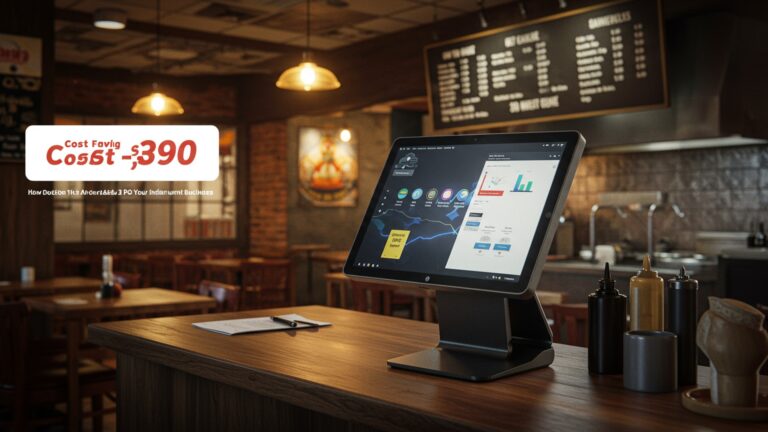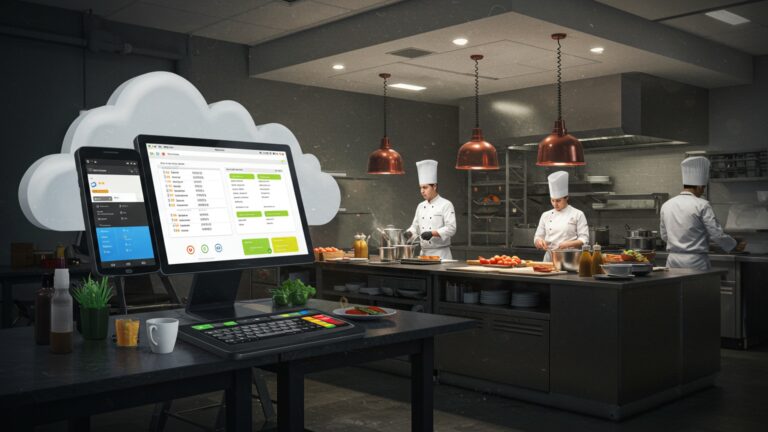7 Essential Benefits of Restaurant POS Software for Indian Eateries
In the vibrant, often chaotic, world of Indian gastronomy, managing everything from diverse payment methods like UPI and QR codes to intricate multi-cuisine menus and burgeoning online delivery orders (think Swiggy and Zomato) can overwhelm even the most seasoned restaurateur. The modern Restaurant POS software India emerges as an indispensable tool, transforming operational bottlenecks into seamless efficiency. It’s no longer just about billing; it’s about real-time inventory tracking for masalas and fresh produce, optimizing staff performance during peak lunch rushes. providing crucial data analytics to enhance customer experience and profitability in a fiercely competitive market.
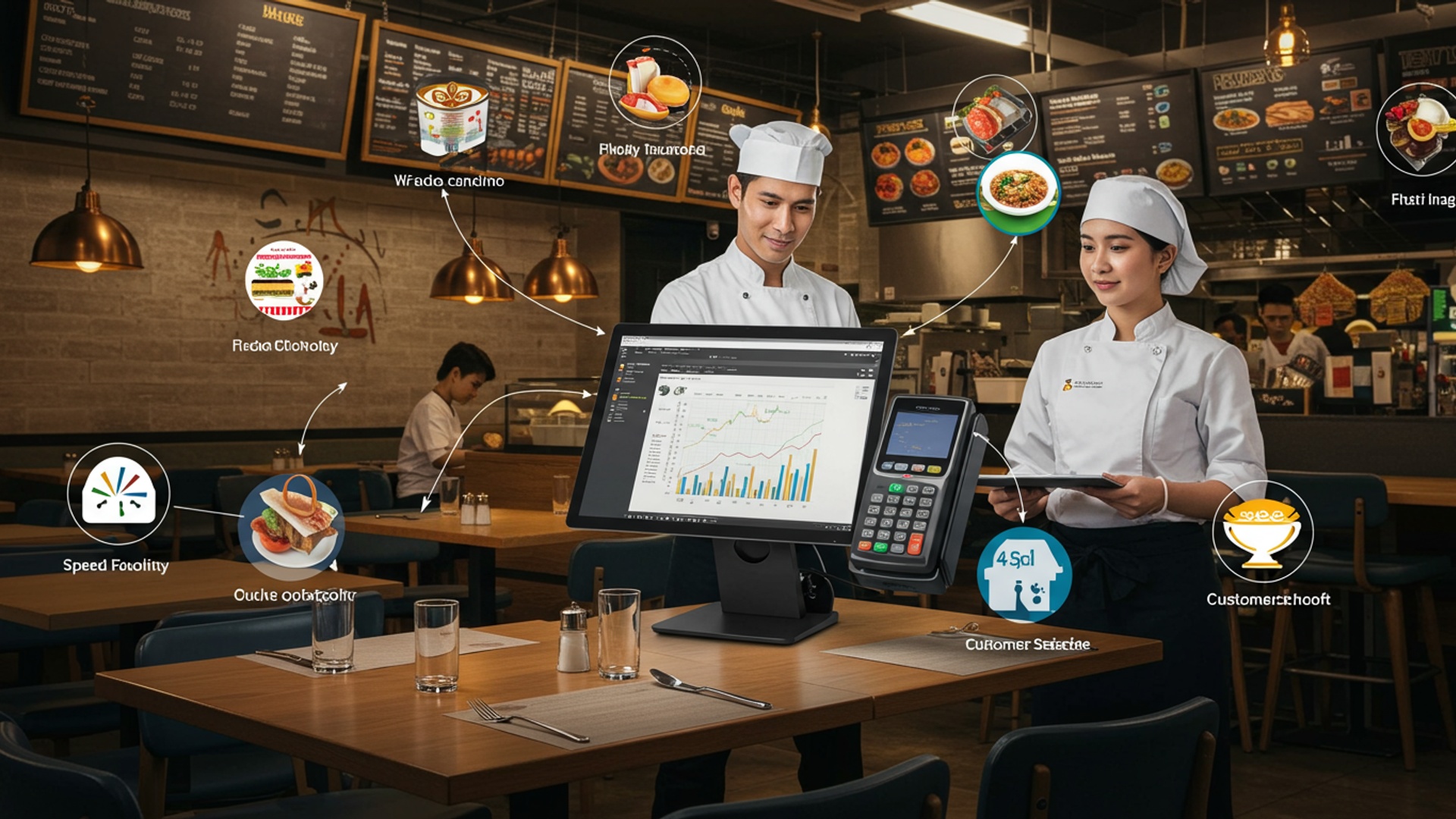
Understanding Restaurant POS Software for Indian Eateries
In the bustling and competitive landscape of the Indian food industry, efficiency, customer satisfaction. profitability are paramount. Modern eateries, from vibrant street-food stalls to fine-dining establishments, are increasingly turning to technology to gain an edge. At the heart of this technological revolution lies Restaurant Point of Sale (POS) software. But what exactly is it?
A Restaurant POS system is essentially a comprehensive software and hardware solution that manages all aspects of a restaurant’s operations. Beyond just processing payments, it integrates various functions, including order taking, kitchen management, inventory tracking, customer relationship management. detailed reporting. For any Indian eatery looking to thrive, investing in robust Restaurant POS software India offers a multitude of indispensable advantages that streamline operations and enhance the overall business.
1. Streamlined Order Management and Enhanced Efficiency
One of the most immediate and impactful benefits of a modern POS system is its ability to revolutionize order management. Traditional manual processes are prone to errors and delays, which can be detrimental in a fast-paced environment. POS software automates and centralizes the entire order workflow.
- Digital Order Taking: Servers can take orders directly on handheld devices (tablets or smartphones) at the table. These orders are instantly sent to the kitchen display system (KDS) or kitchen printers, eliminating handwritten chits and verbal miscommunications. This significantly reduces order errors and speeds up service.
- Table Management: The software provides a visual layout of your restaurant, allowing staff to easily assign tables, track their status (occupied, vacant, reserved). manage waiting lists efficiently.
- Menu Customization: POS systems allow for easy modification of menu items, prices. special offers in real-time. This is particularly useful for Indian restaurants that frequently update daily specials or seasonal dishes.
By minimizing manual intervention, staff can focus more on customer service rather than administrative tasks, leading to a smoother operation and quicker table turnover, crucial for maximizing revenue in high-demand areas.
2. Elevated Customer Experience and Loyalty
In the service industry, a positive customer experience is key to repeat business. Restaurant POS software India plays a critical role in enhancing how customers interact with your establishment.
- Faster Service: From quick order placement to rapid bill generation and payment processing, a POS system significantly reduces wait times, a major factor in customer satisfaction.
- Order Accuracy: Digital order taking minimizes human error, ensuring customers receive exactly what they ordered, reducing dissatisfaction and food waste.
- Personalized Service: Advanced POS systems can store customer preferences, order history. contact details. This allows staff to offer personalized recommendations or remember dietary restrictions, making customers feel valued.
- Loyalty Programs: Many POS solutions come with integrated loyalty program features. Indian eateries can easily set up point-based systems, discounts, or special offers for returning customers, encouraging repeat visits and building a loyal customer base. For example, a customer might earn points for every thali purchased, redeemable for a free dessert.
A seamless and personalized experience translates directly into happy customers who are more likely to return and recommend your restaurant.
3. Robust Inventory Control and Waste Reduction
Food costs are a major concern for any restaurant owner. Effective inventory management is vital for profitability, especially with the diverse and often perishable ingredients used in Indian cuisine. A POS system transforms this often-tedious task.
- Real-time Inventory Tracking: Every time an item is sold, the POS automatically deducts the ingredients used from your inventory. This provides an accurate, real-time view of stock levels, preventing stockouts of popular items or over-ordering of less popular ones.
- Recipe Management: You can input recipes with precise ingredient quantities. When a dish is ordered, the system accurately tracks the consumption of each ingredient.
- Waste Reduction: By knowing exactly what you have and what you need, you can optimize purchasing, reduce spoilage. minimize waste. This is particularly beneficial for ingredients with short shelf lives like fresh vegetables and dairy products used extensively in Indian cooking.
- Supplier Management: Some POS systems help manage supplier details, automate purchase orders. track deliveries, further streamlining the supply chain.
By providing granular control over your ingredients, the POS system helps Indian eateries significantly cut down on food costs and improve their bottom line.
4. Data-Driven Decision Making
One of the most powerful aspects of modern Restaurant POS software India is its ability to collect and review vast amounts of operational data. This data, when properly utilized, becomes an invaluable asset for strategic decision-making.
- Detailed Sales Reports: Generate reports on daily, weekly, or monthly sales, identifying peak hours, popular dishes. slow-moving items. interpret which thali combinations sell best or which biryani variant is a crowd favourite.
- Performance Analytics: Monitor staff performance, table turnover rates. average check sizes. Identify high-performing employees and areas where training might be needed.
- Menu Engineering: Use sales data to identify your most profitable dishes versus those that are less popular or costly to produce. This enables you to optimize your menu for maximum profitability, perhaps promoting high-margin items or redesigning less successful ones.
- Customer Insights: examine purchase patterns, average spending. preferred payment methods to tailor marketing efforts and promotions more effectively.
Access to such actionable insights empowers restaurant owners to make informed decisions that drive growth, improve efficiency. enhance profitability, rather than relying on guesswork.
5. Simplified Billing and Secure Payment Processing
The billing and payment process is a critical touchpoint for customers. A robust POS system makes this process fast, accurate. secure, catering to diverse customer preferences.
- Accurate Bill Generation: Bills are generated instantly based on recorded orders, eliminating manual calculation errors. This ensures transparency and builds customer trust.
- Multiple Payment Options: Modern POS systems integrate with various payment gateways, supporting cash, credit/debit cards, UPI (Unified Payments Interface), mobile wallets (like Paytm, Google Pay). net banking. This flexibility is essential in India’s evolving digital payment landscape.
- Split Billing: Easily split bills by item or by percentage among multiple diners, a common request in Indian group dining, avoiding awkward calculations or disputes.
- Secure Transactions: POS systems adhere to payment card industry (PCI) compliance standards, ensuring that customer financial data is handled securely, minimizing the risk of fraud.
By offering a seamless and secure billing experience, Indian eateries can significantly enhance customer satisfaction and operational efficiency, especially during peak hours.
6. Optimized Staff Management
Managing staff effectively is crucial for any restaurant’s smooth operation. A comprehensive POS system can significantly simplify various aspects of human resource management within an eatery.
- Attendance Tracking: Employees can clock in and out directly through the POS, providing accurate records for payroll and ensuring accountability.
- Shift Scheduling: Some advanced POS solutions offer features to create and manage staff schedules, helping owners optimize staffing levels for different shifts and manage labor costs more effectively.
- Performance Monitoring: Track individual server sales, average order values. table turnover rates. This data can be used for performance reviews, incentive programs. identifying training needs. For instance, you can see which staff members excel at upselling specific dishes.
- Access Control: Assign different access levels to staff members based on their roles, ensuring that only authorized personnel can perform specific actions like discounts or voids.
By automating and centralizing staff management tasks, Restaurant POS software India helps owners maintain a productive workforce and reduce administrative burden.
7. Scalability and Future Growth
As a restaurant grows, its operational needs evolve. A well-chosen POS system is designed to be scalable, adapting to your business’s expansion rather than becoming a bottleneck.
- Multi-Location Management: For Indian eateries planning to open multiple branches, a cloud-based POS system allows centralized management of menus, pricing, inventory. reporting across all locations from a single dashboard. This ensures consistency and simplifies oversight.
- Integration Capabilities: Modern POS solutions often integrate with other essential business tools such as accounting software (e. g. , Tally), online ordering platforms, food delivery apps (e. g. , Zomato, Swiggy). marketing platforms. This creates a unified ecosystem that supports comprehensive business operations.
- Adaptability to Trends: The food industry is constantly changing. A flexible POS system can quickly adapt to new payment methods, online ordering trends, or regulatory changes, keeping your business agile and competitive.
Investing in a scalable Restaurant POS software India ensures that your technology infrastructure can grow alongside your business, supporting future expansion and innovation without requiring a complete overhaul.
Conclusion
Embracing modern POS software is no longer a luxury but a strategic imperative for Indian eateries striving for efficiency and growth in today’s competitive landscape. We’ve seen how integrating a robust system streamlines everything from order management and inventory control to crucial GST compliance, directly impacting your bottom line. My personal tip? Don’t just look for basic billing; seek a solution that offers deep insights into your sales patterns, helping you optimize popular dishes or manage ingredient expiry, particularly vital for fresh Indian produce. Consider how a well-implemented POS can effortlessly manage your peak festival rushes, ensuring swift service even when your kitchen is buzzing, or seamlessly integrate with popular delivery platforms like Zomato and Swiggy, a non-negotiable in the current market. The true power lies in the data it provides, allowing you to make informed decisions that elevate customer experience and operational fluidity. Investing in the right POS empowers you to navigate the complexities of the Indian food service industry with confidence, transforming challenges into opportunities for sustained success and a truly modern dining experience.
More Articles
5 Ways Restaurant Billing Software India Boosts Your Business Efficiency
Master 5 Ways Online Ordering POS Boosts Your Restaurant Sales in India
7 Essential POS System Features Small Indian Restaurants Need to Thrive
How to Choose the Best Billing and POS Software for Your Business
Learn 6 Smart Strategies for Better Inventory Management with POS in India
FAQs
Why should an Indian restaurant even consider getting POS software?
Restaurant POS software helps Indian eateries streamline their daily operations significantly. It makes everything from taking complex orders to managing tables and processing bills much faster and more accurate, which is crucial for handling the diverse menus and busy periods common in Indian dining.
How can POS help me control my food costs and reduce waste?
A good POS system includes robust inventory management features. It tracks every ingredient used, alerts you when stock is low. helps you grasp consumption patterns. This insight minimizes over-ordering, reduces spoilage. helps you keep a tighter control on your overall food costs.
Will POS software actually make my billing and order taking faster?
Absolutely. It digitizes Kitchen Order Tickets (KOTs), allowing orders to be sent directly to the kitchen without manual errors. Billing becomes incredibly fast and accurate with automated calculations, easy item modifications. quick bill splitting options, significantly cutting down wait times for customers.
What does POS do to help me keep my customers happy and coming back?
By speeding up service and ensuring order accuracy, POS software directly enhances the customer experience. Many systems also support loyalty programs, track customer preferences. even integrate feedback mechanisms, all contributing to higher satisfaction and repeat business.
Can I really get useful insights about my business from this software?
Yes, definitely. POS systems generate detailed reports on sales trends, popular dishes, peak operational hours. even staff performance. These insights are invaluable for making informed business decisions, optimizing your menu. planning staffing levels more effectively.
Is it useful for managing my staff more efficiently?
It certainly is. POS software helps track staff shifts, manage table assignments. monitor individual order accuracy and speed. This streamlines front-of-house operations, improves accountability. helps you identify areas for staff training or recognition.
What about handling all those online delivery orders from different apps?
Many modern POS systems offer seamless integration with popular online food delivery platforms like Swiggy and Zomato. This consolidates all your online orders into a single system, reducing manual entry errors, simplifying order management. ensuring faster processing for delivery.

